Over the past 40 years, China has lifted nearly 800 million people out of poverty. Why has China been able to achieve a comprehensive victory in its fight against poverty?
在过去40年时间里,中国有近8亿人摆脱了贫困。中国的脱贫攻坚为什么能够取得全面胜利?
以下是Quora网友的评论:
Godfree Roberts
Author of "Why China Leads the World" [Amazon]Author has 615 answers and 12.2M answer viewsSep 24
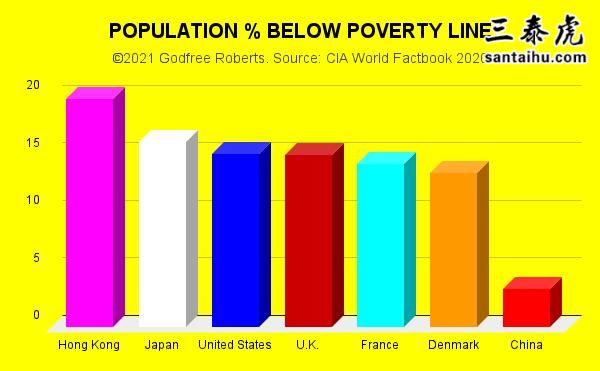
China achieved a comprehensive victory in its fight against poverty because almost all Chinese are morally united. Almost all of them
中国的脱贫攻坚战取得全面胜利,是因为大多数中国人都很团结:
Cherish one value above all, compassion, ren, and their political system* is based on it. A good government is, above all, a compassionate government.
他们非常推崇一种价值观,那就是要怀有同情怜悯之心,也就是中文说的“仁”,中国的体制也是以仁为本。一个好的政府,首先要有仁义之心。
Realize that compassionate people–who give their lives to serving others for little material reward–are rare.
有仁之人——淡泊物质名利帮助他人,甚至愿意奉献生命——这样的人弥足珍贵。
Understand that only geniuses can run a country well.
他们明白,只有精英才能治理好一个国家。
Recruit the 27,000 smartest, most compassionate, effective 22-year-olds (IQ 140+) every year and send them to live in poor, remote villages until they raise every villager’s income 50%.
每年录用27000名最聪明,最仁善,肯干能干的22岁年轻人(智商140以上),把他们派往贫困偏远的乡村支援经济建设,直到他们帮村民的收入提高50%为止。
Promote those who consistently raise local living standards. china did this for his village when he was 19, then repeated it at every level for 25 years. Since his appointment, he has doubled everyone’s incomes.
提拔那些持续提高了当地人生活水平的官 员。中国就成功做到了,19岁开始担任村干部,此后25年,当地村民们的收入逐年稳步增加。自上任以来,大家的收入翻了一番。
The anti-poverty campaign was ‘comprehensive’ because it not only provided jobs, schools, and modern homes, but it also considered the feelings of people who had to abandon their villages (often on the edge of a desert). The result was new, inexpensive, low-cost villages that anyone would be proud to live in:
So comprehensive is the anti-poverty campaign that, even after its success in 2021, Beiing is continuing it, so that nobody falls back into poverty.
脱贫攻坚战之所以是“全面战斗”,是因为政府不仅提供工作岗位、建设学校和现代化住房,而且还贴心照顾那些不得不搬离故乡(大多位于沙漠边缘)的居民的心情。最后大家有了全新的家园,价格低廉,每个人都以住在新家为荣。
脱贫攻坚战的面非常广,即便在2021年取得成功后,中国仍未停止脚步,目的就是为了确保没有人再次返贫。
Wenxang Chen
Lives in ChinaAuthor has 1.3K answers and 1.5M answer viewsUpdated Thu
When I search "扶贫" in Google pictures
我搜索“扶贫(中文汉字)”,结果如下:
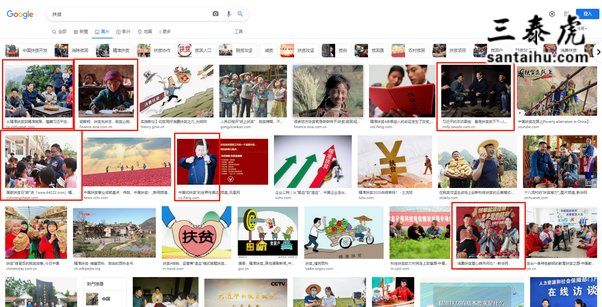
When I search for "help poor" in Go gle pictures
我搜索“help poor(也是扶贫,换成英文而已)”,结果如下:
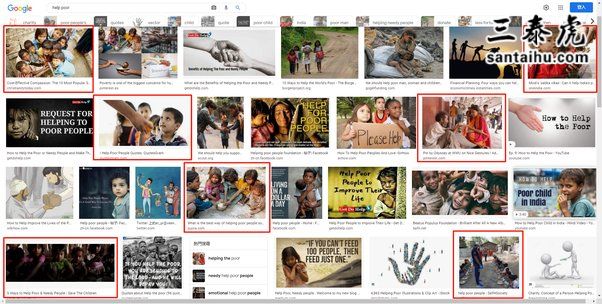
See the difference?
In China, you can see the participation of the top leadership, you can see the positive actions of adults who are able to create wealth, you can see the participation of the government in decision-making, you can see business projects, and you can see practical actions.You can see the children being educated
More importantly, adults stand with children on an equal footing, rather than need children to look up, or let them eat on the ground like dogs when those “kind people” take photos
看出不同了吗?
在这些图片中,你能看到在中国,领导人会亲自参与这场运动,有商业头脑的成年人会积极响应,政府参与制定决策,你看得到商业项目,也看得到实际行动。你也看得到孩子们正在学校接受着教育。
更重要的是,大人跟孩子站在一样的高度上,孩子们无需抬头仰望,也没有在那些“好心的人”拍照时蹲在地上吃东西。
But in the west, you can only see an arrogant hand giving alms, or a group of adults feeding their children like dogs.
I'm not saying that a few pictures can reflect everything, but at least it can reflect something. You can also search "poverty alleviation" on Google
但在英文搜索出来的图片中,你看到的是一只手在傲慢地施舍,是成年人像喂狗一样喂穷人家的孩子。
当然,几张照片不能说明一切,但至少能看出点东西。你也可以试着在搜索“poverty alleviation”(减贫)看看。

As a result, you can see countless theories, charts, knowledge structures... But you rarely see actual actions.
搜索出来的是一个又一个的理论,一张又一张的图表和思维导图 ...但很难看到实际行动的照片。
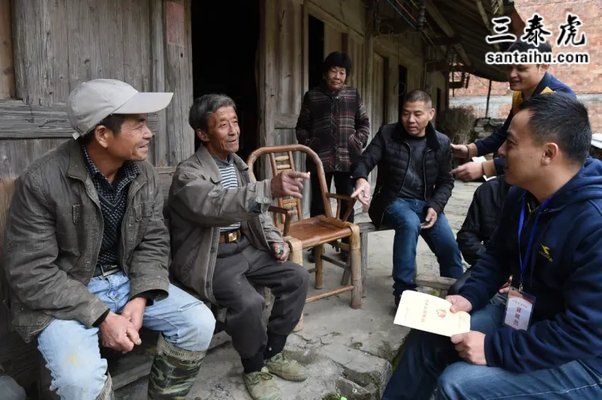
Countless Co unists and volunteers went to the poorest places.
Register the poor people, analyze their family situation and even psychology, and make money making plans and strategies for the county and families one-on-one and point-to-point, so as to solve problems for them.
中国有无数的志愿者深入最贫穷的地区。
对贫困人口进行登记,对他们的家庭情况甚至心理状态进行一一分析,一对一、点对点地为乡镇家庭制定赚钱计划和策略,为他们解决营生问题。
More than 1800 Chinese officials died for China's poverty alleviation work, traffic accidents, diseases triggered by overwork, and natural disasters······
They did not sitting in a luxurious restaurant and enjoying expensive food, use charity dinner to "help the poor"
They did not shake hands with the poor through the barbed wire, followed by a large number of reporters and bodyguards boasting of their kindness
有超过1800多人为了扶贫事业,因交通事故、积劳成疾、自然灾害等不幸牺牲。
他们不是坐在豪华餐厅,享用奢华美食,用慈善晚宴的噱头来“帮助穷人”。
他们没有被一众记者和保镖簇拥着、隔着铁丝网和穷人握手,吹嘘自己的恩德。
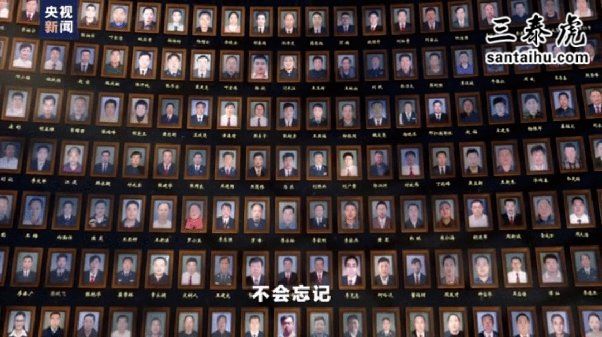
(WON’T BE FORGOTTEN)
You ask me how China can lift hundreds of millions of people out of poverty.
——Blood and sweat, my friend, the blood and sweat of a real com nist.
你问我中国如何让数亿人摆脱贫困。
——血与汗,我的朋友,血与汗。
John Wong
Worked at ChinaAuthor has 2.9K answers and 1.8M answer viewsWed
China’s method has one basic assumption: to eliminate poverty, you need to change people’s way of lives so that they can live and work above poverty instead of just handing out foods and money.
中国的方法有个基本要领:想要消除贫困,必须改变人们的生活方式,让他们有能力好好生活和工作,而非简单的发粮发钱了事。
At one extreme, people were relocated to more livable areas and were provided with housing and provisions, but they did not stop there, they also found/create jobs for those people.
Another feature is that China had 100s of 1000s (i.e. 100,000s or more) of schemes each tailored to situations.
一方面,中国把贫困人口重新安置到更宜居的地区,提供住房和给养,但这还不够,政府还帮这些人找工作,提供工作岗位。
另一个妙招是中国制定了无数方案(可能多达几十万份),每个方案都是根据贫困家庭的情况量身定制的。
The third major difference, on my book, would be the way they defined what’s “out of poverty” which is no worry about foods and clothing and assurance for housing, education and healthcare provisions. At the end these measures were above the ‘world standard/definition’ based on $ amount. The point is that in many areas the foods and housings were free anyway and you can’t exactly measure the education, healthcare provisions or put $ values to these. There’s also the problem of PPP (purchasing power parity) because in poor areas of China the PPP factors can be greatly different from the “national average”.
第三个不同之处在于他们对“脱贫”的定义,即不愁衣食,不愁住房、教育和医疗保障。这些标准其实都要高于以美元金额划定的“世界标准”。而且关键的是,在很多地方,食物和住房都是政府免费提供的,而且我们无法准确测算教育、医疗保健的金额,也就无法折算成美元。此外还有购买力平价的问题,因为在中国贫困地区,购买力平价因素可能与“全国平均水平”有很大不同。
Greg Davis
Mon
Because China offers cheap labor and global businesse take advantage of that. China lacks environmental regulations and does not care about excess polution. China does not honor patents or trademarks and steals the ideas of others to make cheap knock-off products.
因为中国拥有大量廉价劳动力,全球企业利用了这一点。环境法规很薄弱,对过度污染睁一只眼闭一只眼。不尊重专利和商标,随意窃取他人的创意,制造廉价的山寨产品。
Jamie Wright
How did China get rid of its poverty in a few decades?
To understand China's "secret," we must first look back to 1978, when the period of reform and opening up began. Former Chinese leader Deng , the chief architect behind China's pro-market reforms, famously said, "Poverty is not socialism. Socialism means eliminating poverty."
要了解中国的“秘密武器”,就必须先回顾1978年,也就是刚开始改革开放的时候。中国市场经济改革的总设计师有句名言:“贫穷不是社会主义,社会主义要消灭贫穷。”
Since the economic reforms were launched, China has witnessed unprecedented economic growth. Decades of rapid growth have served as the bedrock of the country's development, without which China's poverty alleviation miracle would not have been possible. That said, economic development alone was not enough to completely eliminate poverty.
改革开放以来,中国经济取得了前所未有的增长。中国经济几十年的快速增长是中国发展的基石,没有经济的快速发展,中国的扶贫奇迹也不可能出现。也就是说,仅靠经济发展还不足以完全消除贫困。
Ban Wei, deputy director of the Editor's Office of inhua News Agency, noted that the market is ultimately unable to deliver for those at the bottom. In an address to the International Forum on Poverty Governance and Development Towards Modernization, Ban explained that many of China's rural poor were excluded from the market for living in remote locations.
The market is a decisive and important resource-allocating factor, he said. "But market economics is based on efficiency and the market is unfriendly to those people in poverty."
新华社总编辑办公室副主任指出,市场最终无法为底层人群提供服务。班玮在“贫困治理与现代化发展国际论坛”上发表讲话时解释说,中国许多农村贫困人口被排除在偏远地区生活的市场之外。
他说,市场是资源配置的决定性因素。“但市场经济是建立在经济效率的基础上的,市场对贫困人口不够友好。”
Robert Walker, a professor with the China Academy of Social Management at Beiing Normal University unpacked this point further. "The market will always favor the city because the city brings economies of scale," he told Beiing-based media China Focus.
Under the leadership of, China waged an all-out war against poverty in late 2012. Officials in Beiing rallied the 91 million Co unist Party of China members, together with the private sector and members of the general public in pursuit of one central aim: The elimination of absolute poverty by 2020.
北京师范大学中国社会管理研究院教授罗伯特•沃克进一步阐述了这一点。“市场总是青睐城市,因为城市带来了规模经济,”他在接受北京媒体《中国聚焦》采访时表示。
中国在2012年末发动了一场全面的脱贫攻坚战。中国召集了9100万名党员,联手私营企业和公众,向着一个重要目标努力:到2020年消除绝对贫困。
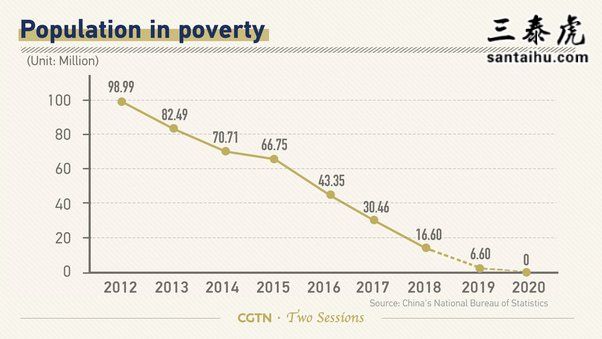
Local authorities largely took the lead over regional development, adopting a two-pronged approach that weaved together large-scale infrastructure projects with targeted poverty alleviation measures.
在很大程度上,地方政府主持了区域经济发展的工作,采取双管齐下的方法,将大型基础设施项目与精准扶贫措施结合起来。
More than 250,000 teams were dispatched to offer on-the-ground support. In total, more than 3 million people were sent to the country's most remote villages as special commissioners for poverty relief.
A common cause for many in poverty was found to be their location. Take Tib Autonomous Region for example. Tib has historically been China's poorest region, mainly due to its remote and hostile environment. Known as the Roof of the World, the Qinghai-Tib Plateau sits at an average elevation of 4,572 meters, and is surrounded by one of the most formidable mountain ranges on the planet.
超过25万支队伍被派往贫困一线进行支援。累计有300多万人被派往最偏远的村庄担任扶贫特派员。
研究发现,造成很多贫困局面的共同原因是地理位置。以西 藏为例,历来是中国最贫穷的地区,主要原因就是偏远和恶劣的环境。青藏高原被誉为“世界屋脊”,平均海拔4572米,被地球上最雄伟的山脉之一环绕。
Living in the remote highlands meant being cut off from high-quality public amenities, such as healthcare and education. It meant being unable to grow a variety of stable crops. And it also meant being restricted from engaging in trade and commerce.
生活在偏远的高原地区,就意味着无法享受到高水平的公共设施,比如医疗和教育;意味着无法种植各种产量稳定的农作物;也意味着很难参与贸易和商业活动。
To alleviate this problem, local authorities launched an ambitious relocation program in 2013. Following the example of other remote regions in China that incorporated relocation programs with a mass-infrastructure drive, Tib's most impoverished people were relocated to newly built communities with full access to essential services. More than 260,000 residents across the autonomous region took advantage of the scheme. Within six years, Tib had shaken off absolute poverty.
为了解决这一问题,当地政府在2013年启动了大规模的搬迁计划。参照中国其他偏远地区的做法,将搬迁计划与大规模基础设施建设相结合,把最贫困的人口安置到基础设施一应俱全的新社区。该计划共造福了26万多名居民。只用了6年时间,就摆脱了绝对贫困的局面。
In the hope that others can learn from its experience, China has committed to sharing its knowledge and methods with the develo world. It has made clear, however, that although China's methods worked for China, other countries must follow their own path in line with their unique challenges and environment.
The key to China's development, then, is not any particular policy or method, but rather its political economy.
中国致力于与其他发展中国家分享自己的经验和方法,希望其他国家可以从中得到启发。但中国明确表明,尽管中国的方法对中国真实有效,其他国家还是必须根据本国的难点和环境摸索出适合本国的路。
所以,中国发展的关键不在于某个特定的政策或方法,而在于它的政治经济。
Daniel Pierce
BS from DeVry University (Graduated 2015)Author has 2.4K answers and 944.4K answer viewsSep 23
Did it? Or did China simply change what it means to be in poverty, an invent systems that force each person to work?
有吗?也许中国只是改变了贫穷的定义,创建了强制每个人都要工作的制度?
World bank (where the China claim comes from) defines poverty as those living on less than $1.90 a day, not an hour but a day. In America a single person making less than $12,880, or $35.29 dollars a day, a year is said to be in poverty. That is 18.5 times higher than China’s or World Banks definition.
If you push the threshold up to $3.10, or roughly the old poverty level in China, a day you get 27.2% of people in China are in poverty. Which is 11.38 times higher than China’s or World Banks definition today. Below is the per capita disposable income or what China says is disposable income that they have. FYI to reach America’s definition of poverty of $12,880 you need to have 83,033 Yen. The average worker in China makes about 5,000 a year USD.
世界银行将贫困定义为每天生活费低于1.90美元,不是每小时,而是每天,中国就是以此为标准。但在美国,年收入低于12880美元(相当于每天收入35.29美元)的人被称为贫困人口。这比中国或世界银行的定义高出18.5倍。
如果把这个标准提高到3.10美元,或者中国过去的贫困水平,那么中国有27.2%的人处于贫困之中。这比中国或世界银行目前的定义高出11.38倍。下面是人均可支配收入或者中国所说的可支配收入。仅供参考,要达到美国贫困线12880美元的标准,需要拥有83033元。而中国工人的平均年收入约为5000美元。

 西方国家的投资让5亿中国人脱贫,让
西方国家的投资让5亿中国人脱贫,让 (VIP)同样曾被英国殖民统治,为什么
(VIP)同样曾被英国殖民统治,为什么 世界银行:印度极端贫困人口急剧减少
世界银行:印度极端贫困人口急剧减少 印度的新冠危机:奴隶制、自杀和极端
印度的新冠危机:奴隶制、自杀和极端 过去10年,印度有2.73亿人脱贫,印网民
过去10年,印度有2.73亿人脱贫,印网民 印度总统:印度致力于消除贫困,努力跻
印度总统:印度致力于消除贫困,努力跻 印孚瑟斯联合创始人:印度当前财政状
印孚瑟斯联合创始人:印度当前财政状 联合国报告:2006年到2016年,印度2.71
联合国报告:2006年到2016年,印度2.71